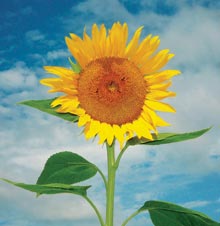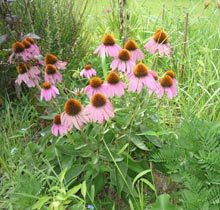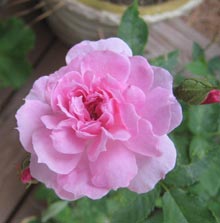 Fall is in the air and night temperatures are at a lovely low after the humidity of the past summers’ sticky caress. The roadsides and fields are blooming whites, yellows and lavenders as flowers are desperately trying to attract bees, flies, moths, and butterflies.
Fall is in the air and night temperatures are at a lovely low after the humidity of the past summers’ sticky caress. The roadsides and fields are blooming whites, yellows and lavenders as flowers are desperately trying to attract bees, flies, moths, and butterflies.
As the day length shortens many plants are coaxed into putting on a show of flowers, offering nectar and pollen in exchange for services rendered by the hairy legs and sticky mouths of insects. Not all flowers need those services and pollen can be spread by animals’ fur, water and wind. The flowers on these plants are usually dull green. The pollen is very sticky, especially inside of your nose and sinuses. National Geographic Magazine did an article years ago examining different types of pollen under an electron microscope. The wind pollinated pollens were especially malevolent looking.
Most insect pollinated annuals and perennials in the Asteraceae or Compositae family (aster, daisy, or sunflower) signal pollinators with colorful strap-shaped ray petals, usually white or bright. The disc flowers in the center have nectar and pollen which are  naturally exchanged with other flowers of the same species. While plants may be self-pollinating, it is much more common in nature for them to need pollen from another plant, allowing a greater genetic diversity to the species.
naturally exchanged with other flowers of the same species. While plants may be self-pollinating, it is much more common in nature for them to need pollen from another plant, allowing a greater genetic diversity to the species.
Let’s look at some of the fall bloomers in the Lowcountry. Groundsel, Baccharis spp., is a medium to large shrub which we see on the edge of the marsh and swamps and ditches. They are a favored by bees and cultivated as a native ornamental. The wispy terminal clusters are separate male and female disc-type flowers on separate plants. Other white bloomers are Boneset, Rabbit tobacco, mayweed, ox-eye daisy, daisy fleabane, and elephant toes. These are in the genera Eupatorium, Pseudognapthalium, Anthemis, Chrysanthemum, Erigeron, and Elephantopsis, respectively. The genus Aster has gone through some revision since the books I learned from were written, and DNA sequencing has shown that the Asters in North America are not genetically similar enough to the Asters from Europe to keep that name. Now they have been renamed with mostly unpronounceable but correct names like Symphyotrichum. Spell check really resents that one. Two vining asters are the climbing hempweed, Mikania scandens, and Elliott’s Aster, Symphyotrichum elliottii. The former sounds like some kind of scoundrel and the latter is named for our most famous botanist Stephen Elliott. Both are quite lovely scrambling on trellises, fences, and over roadside ditches. One last favorite of mine is Frostweed, also called White Crownbeard; this Verbesina can easily get to be over 6 feet tall.
Yellow, lavender, pink and orange also give us lots of color to go with the changing season and leaves beginning to turn and fall. Most often the centers of daisies and sunflowers are yellow, a color that attracts insects; coreopsis, marigolds, goldenrod, and zinnias, are just so bright and sunny looking now and will keep going until frost puts them to rest. Exceptions to the yellow centers, Rudbeckia, Echinacea, other coneflowers and black-eyed Susans have brown or dark disc flowers. To insure longer blooming in your annual and perennial gardens take the scissors out with you and keep cutting them. Snip off any dead seed heads for reseeding or dried arrangements.
(Photos by Laura Lee Rose)







